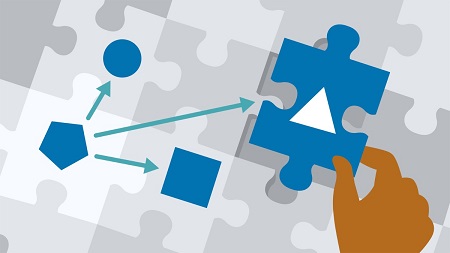English | MP4 | AVC 1280×720 | AAC 48KHz 2ch | 2h 8m | 355 MB
In the world of data science, machine learning and statistics are often lumped together, but they serve different purposes, and being versed in one doesn’t mean expertise in the other. In fact, applying a statistical approach to a machine learning problem, or vice versa, can lead to confusion more than elucidation. In this course, Keith McCormick covers how stats and machine learning are different, when to use each one, and how to use all the tools at your disposal to be clear and persuasive when you share your results. He covers topics like: Why correlation is insufficient evidence of causation; the difference between experimental and observational data; and the differences between traditional statistics and Bayesian statistics. Keith also looks at causality, a tricky topic when it comes to using statistics and machine learning to prove something causes something else. If you build machine learning models, run statistical analyses—or especially if you do both, this course is for you.
Table of Contents
Introduction
1 Prediction, causation, and statistical inference
What Is a Casual Model
2 Lady tasting tea
3 Why was it so difficult to establish causality
4 Why causation matters in a business setting
5 What is a causal model
Healthy Skepticism about Our Data and Our Results
6 Skepticism about data Truman 1948 Election Poll
7 Skepticism about results Is that really the best predictor
8 Skepticism about causes Is X really causing Y
Correlation Does Not Imply Causation
9 What is a strong correlation
10 Pearson on correlation and causation
11 Correlation and regression
12 Challenge What is causing what
13 Solution What is causing what
Prediction and Proof in Statistics
14 Using probability to measure uncertainty
15 p-value review
16 Hypothesis testing checklist
17 Taleb on normality, mediocristan, and extremistan
18 Challenge Evaluate significant finding
19 Solution Evaluate significant finding
Deduction and Induction
20 What are induction and deduction
21 Hume on induction
22 Popper on induction and falsification
23 Taleb on induction
24 Counterfactuals Pearl on induction and causality
Prediction and Proof in Data Mining
25 Data mining vs. data dredging
26 TrainTest What can go wrong
27 AB testing during the evaluation phase
The Two Cultures Contrasting Statistics and Data Mining
28 The Two Cultures
29 Explain vs. predict
30 Comparing CRISP-DM and the scientific method
31 Applying the two methods at work
Conclusion
32 Review
Resolve the captcha to access the links!
